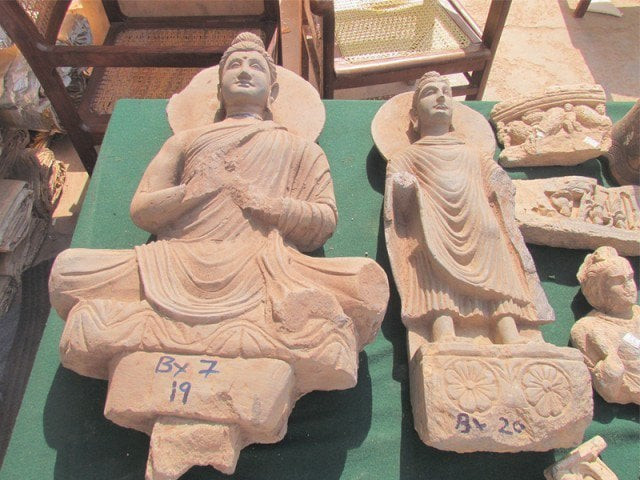
About 40 objects from the rich and rare collection of Gandhara civilisation from Peshawar Museum – including relief panels showing the life story of Buddha, individual standing and seated status of Buddha, bodhisattvas and Kanishka reliquary – will remain on display in Seoul for three months starting from June 29.
Blast from the past: New language system of Gandhara civilisation discovered
“This will revive religious and culture tourism in Pakistan,” said director Khyber-Pakhtunkhwa Archaeology and Museums Dr Abdul Samad, who will be in Korea to be part of the first-ever exhibition of its kind in the South Korean capital.
The opening ceremony was performed by Pakistan ambassador to South Korea Rahim Altaf Quraishi and the Korean chief monk. Ambassadors of Sri Lanka, Bhutan and Taiwan to South Korea were also in attendance on the first day of the exhibition.
According to late archaeologist Fidaullah Sehrai, it was the Peshawar valley that was the cradle of Buddhist civilisation in ancient times that gave birth to Gandhara art on its fertile plains and mountains.
“On the opening day of the exhibition, hundreds of Koreans visited the centre to come to know of the treasure of Pakistan for the first time,” Asif Raza, the curator of Peshawar Museum, told The Express Tribune from Korea.
“The Gandhara art is the symbol of prosperity, peace and tolerance. Though our region is the centre of this civilisation, the real image of this region is hidden from the world,” he said. “Through this art we can promote the real image of Pakistan, especially in Buddhist countries like Japan, Korea, China, Sri Lanka and Cambodia.”
Raza said Koreans were so impressed by the artefacts that they expressed their intention to visit K-P.
“During the three months, we will organise events to motivate more people to admire and visit rich treasure of Gandhara art,” he said. “Cultural links between the two countries should be re-established and such events will play a vital role in this regard.”
Dr Abdul Samad opined: “Pakistan’s relations with South Korea starts from 4th century AD when monk Maranatha, native of Gandhara, spread Buddhism to Korea. He first came to Yeonggwang city of Korea which has also been declared a sister city of Chota Lahore in Swabi district as this city has a great significance in Buddhist history.”
Preserving history: First Pashto book on Gandhara civilisation published
He added: “It is the right time to revive ancient links between Pakistan and South Korea though this exhibition. We, the people of K-P, are part of the Gandhara civilisation. We have more than six thousands archaeological sites – with the majority of them belonging to the Gandhara civilisation.”
According to Dr Samad, of the 12 museums in Khyber-Pakhtunkhwa, the British-era Peshawar Museum is one of the biggest in the world housing more than 30,000 Gandhara civilisation-era objects. “Out of them, some master pieces have been selected for this exhibition,” he said.
“Our government is keen to revive religious and culture tourism,” Dr Samad said, adding, “With such exhibitions, we are expecting more South Korean tourists to come to Pakistan to interact with local people.”


















COMMENTS
Comments are moderated and generally will be posted if they are on-topic and not abusive.
For more information, please see our Comments FAQ